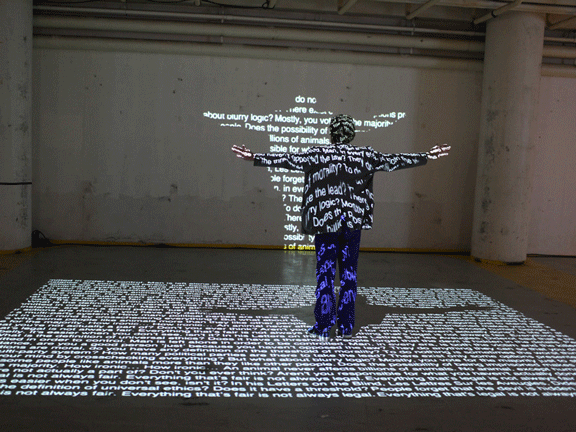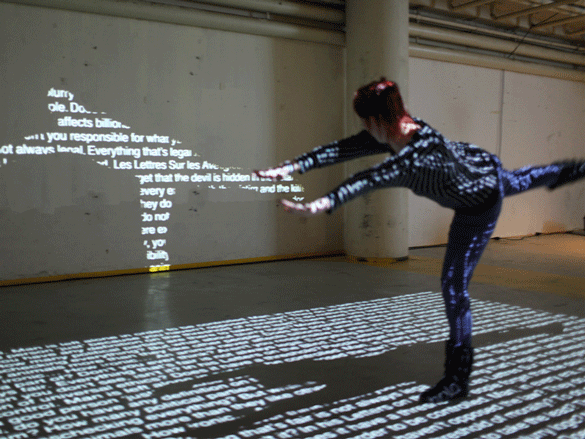“Everything that’s legal is not always fair. Everything that’s fair is not always legal.”
With just these two simple phrases, Istanbul-based multidisciplinary studio NOTA BENE Visual introduces the moral dilemma that has come to define much of today’s political and media environment. Presenting us with thought-provoking musings on the ethical minefield of modernity, the studio’s 2016 installation In Order to Control asks viewers to pause and reflect upon difficult questions regarding morality, freedom and political engagement.
The installation, which critiques unsustainable social and political practices, echoes the motivations behind the United Nations Sustainable Development Goals (SDGs). Its critical discussion on how violence and freedom interact with the political landscape speaks to the goal for Peace, Justice and Strong Institutions, while its international audience and linguistic accessibility mirror the global outreach of Partnerships for the Goals.
The installation itself is simple - a text discussing ethics and morality is projected on an area of the floor upon which people step, consequently realizing themselves on the wall in front of them as words from the text form the outline of their body.

A video recording of the piece in action shows visitors very much enjoying themselves, doing cartwheels, backbends and silly poses as they get a feel for the interactive process.
On the one hand, it is encouraging to see people engage with an artwork for longer than the 27 seconds of attention that the average work of art commands. Yet, on the other hand, the contrast between the seriousness of the installation’s tone and the lightheartedness of the interactions is vaguely jarring, leading one to question whether or not the message is even getting through to the audience as the creators intended.
A more cynical interpretation would posit that these individuals, mesmerized by their own reflection on the wall, embody the self-absorption of modern media and the narcissistic personalities whose voices drive our debates and inform our opinions. However, it is precisely this sort of accusatory outlook on others that In Order to Control is trying to discourage.

Again and again, the installation’s text asks variations of the same question: “Do you think you are a moral person?” As you watch yourself become projected in word form onto the wall, the people behind the work ask that you keep this question in mind.
Yes, it is easy to pass judgment on billionaires abandoning our planet while the rest of us deal with the consequences of their unfettered environmental exploitation. Doing so draws a clear line between the unethical and the ethical - with ourselves comfortably residing within the latter.
However, to quote the installation itself, “That’s all about black and white – but what about the grey zone?”
In Order to Control challenges us to stop thinking in rigid binaries, prompting the viewer to consider their own role in political, cultural, and environmental phenomena. “Have you used your deodorant spray today,” it asks, “Well then, who caused that ozone hole?”
The rhetorical questions posed by NOTA BENE Visual are not meant to be easy to sit with. They destabilize our long-held notions of legality and political involvement, forcing us to self-reflect by literally projecting our text-wrapped image in front of us.
While the introspection that it asks of us may seem confrontational, the aim is not to say every person alive is inherently evil. Rather, the installation asks us to momentarily suspend our need to control - a uniquely human need that influences everything from our institutions to our social interactions to our own self-perception. We can even have fun while doing so, as long as we take the time to reflect.
To see more of NOTA BENE Visual’s projects, see their website.
